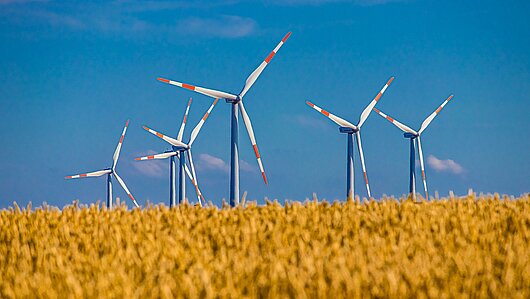
Bioeconomy working group
Head: Prof. Dr. Michael Nelles and Prof. Dr.-Ing. Achim Loewen
Ziele
- Promoting the exchange of information
- Initiate concrete projects
- Presentation of best practice examples
- Presentation of new technical developments
- Presentation of approaches for balancing saved emissions and funding programs
Discussions on opportunities and obstacles should help to identify sensible approaches and support implementation in the municipalities with the involvement of all stakeholders.
Content
The aim of the Climate Protection Working Group, which was founded in 2019, is to offer municipalities in particular, but also other planners and operators of facilities as well as other interested parties, a platform for exchanging ideas and developing new ideas and concepts for climate protection activities. sc The focus here is on measures for the treatment, material and energy use of biogenic residual and waste materials. co ona, only two online workshops took place in the first two years as part of the Future Forum Energy and Climate in Kassel in 2020 and 2021 as well as initial discussion rounds with members of both associations, but face-to-face events with visits are also to take place from summer 2022.
In light of current severe weather events, but also the “Fridays for Future” movement, climate protection is once again becoming more important in political and social discussions in Germany. Recent phenomena such as record temperatures and tree dieback show that further measures are urgently needed to reduce global warming. If discussions and political goals provide an important framework, concrete concepts and projects must be adapted to local circumstances and planned and implemented at this level. Municipalities can make an important contribution here. The results from the Federal Environment Agency show that targeted material flow management in the area of waste management in Germany has already led to a net reduction of 27 million tons of CO2 equivalents from 38 million tons of CO2 equivalents in emissions since 1990 by 2015. The reasons for this success were the phasing out of landfilling untreated municipal waste and the increased use of waste for materials and energy. There are still major challenges, e.g. in the area of sewage sludge treatment, but also opportunities and potential due to previously unused material flows and new technologies such as the production of biochar through pyrolysis or hydrothermal carbonization. com This means that local players could make an increased contribution to closing their material cycles and thus practising active climate protection locally.
DGAW would like to help exploit these opportunities and promote the exchange of information and the initiation of specific projects. Among other things, this is achieved by presenting examples of best practice, new technical developments, approaches to balancing saved emissions and funding programs. ussions on opportunities and obstacles should help to identify sensible approaches and support implementation in the municipalities with the involvement of all stakeholders.

